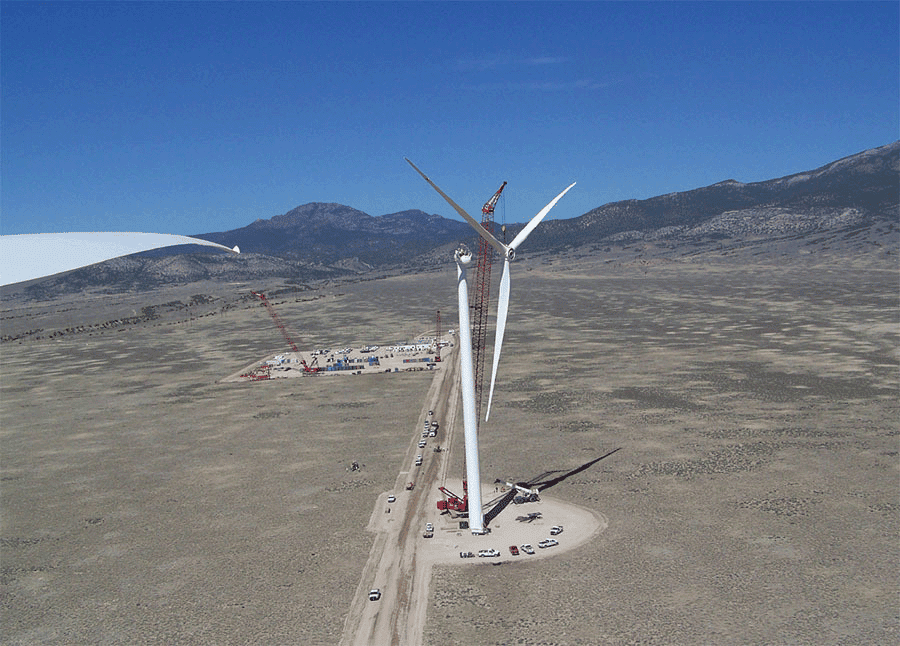mortenson construction / spring valley wind project
ely, nevada

Project
Located on 7,600 acres of land managed by the United States Bureau of Land Management (BLM) near Ely, Nevada, the Spring Valley Wind Farm’s 66 turbines will generate 152 megawatts of wind power. The BLM is committed to safeguarding the sensitive resources on Bureau lands. Mortenson Construction was challenged to minimize the project footprint in order to reduce the cultural, historical, and biological impact of the project.
Facts
- Starting with optimized laydown plans minimized environmental, biological, and cultural conflicts and mitigated delays.
- Mortenson’s design reduced each turbine site by 1.1 acres – nearly 40% of the original disturbance area approved by the BLM.
- Teardrop-shaped laydown sites saved a total of 77 acres from disturbance.
“Bentley’s solutions reduced the project footprint, the amount of field time spent being delayed by environmental, biological and cultural conflicts, and also improved communication amongst the stake holders, which led to a stronger more collaborative relationship with the BLM land managers. This set the stage for future work Mortenson performs on BLM land.”
– Sera Maloney
Integrated Construction Manager, Mortenson Construction
Solution
Using MicroStation, OpenRoads (formerly known as InRoads), and OpenCities (formerly known as Bentley Map), Mortenson modeled each stage of construction on each turbine site to optimize the layout of turbine parts and equipment. The turbine foundation bases required a tremendous amount of rebar to support the 80-meter-tall, 306-ton wind turbines. Modeling the rebar enabled the team to resolve electrical conduit conflicts before they occurred in the field, mitigating schedule delays and associated impacts on wildlife.
Outcome
Mortenson reduced each turbine site by nearly 40%, resulting in a 77-acre reduction in approved ground disturbance area. When identification of pygmy rabbit habitat required a redesign of roads, turbines, and electrical connections, InRoads enabled quick changes and model delivery for machine control grading with no impact on the project schedule. This saved days of coordination and file conversion.
Software
MicroStation
Bentley software (including MicroStation, Open Roads, and OpenCities) was critical to minimizing the disturbance area at each turbine site, as well as allowing for flexibility in machine controlled grading and road alignment in response to biological and cultural encounters. The software reduced the time required to react and redesign.


